Stem Cell Therapy & Botox Treatments for Cerebral Palsy
In recent years, there have been significant advancements in the treatment options for cerebral palsy. Two of the most promising treatments are stem cell therapy and Botox injections. These innovative approaches show great potential in improving the symptoms and quality of life for individuals with cerebral palsy.

As neuroscience advances our understanding of the developing brain, the hope for discovering a cure for cerebral palsy (CP) lies in gaining a better understanding of the condition and learning new ways to reduce symptoms. Doctors and scientists are conducting ongoing research and exploring the potential use of stem cells in treating cerebral palsy.
Cerebral Palsy Lawyers
1-888-987-0005The birth injury attorneys at Miller Weisbrod Olesky are dedicated to providing compassionate legal support to families and their children living with a birth injury, such as cerebral palsy.
While the treatment is still in its infancy, studies indicate that stem cells can help treat brain conditions by helping to regenerate damaged tissue. The results from clinical trials using cord blood infusion to treat children with cerebral palsy show that this treatment is safe and effective in reducing the number of disabilities caused by the condition.
Botox (Botulinum toxin) injections are another treatment option for reducing muscle spasticity, increasing range of motion, and inhibiting excessive muscle contraction in children with spastic cerebral palsy. Although Botox is not FDA-approved to ease lower-limb spasticity in children, some doctors may use it in an off-label capacity to treat children with CP.
A medication not approved for a specific use, like Botulinum toxin for cerebral palsy, does not mean that it is banned for that use. In determining if the possible benefits outweigh the risks, healthcare providers should use their professional discretion. These newest treatments for cerebral palsy are showing tremendous promise in improving how children with CP live and function.
What is Cerebral Palsy?
Cerebral Palsy (CP) is the most common physical disability of childhood, affecting 3 out of every 1,000 live births. It is typically caused by damage to or lack of development in a part of the brain that controls movement.
Several factors at the time of birth, such as failure to perform an emergency C-section in response to fetal distress, uterine rupture, problems with the umbilical cord, and detachment of the placenta, can contribute to the development of cerebral palsy. The most common cause of cerebral palsy is a birth injury to the brain called hypoxic-ischemic encephalopathy (HIE).
Cerebral Palsy disrupts the individual's ability to control movement and maintain posture and balance. Combining multiple therapies and treatments into a comprehensive healthcare plan is often the most beneficial approach for children with CP.
Treating Cerebral Palsy

Stem cell therapy is an emerging treatment option for cerebral palsy that has the potential to improve motor function and reduce spasticity by promoting cell repair and regeneration.
In addition to stem cell therapy, Botox injections have also been used as treatment for muscle spasticity in children with cerebral palsy. Botox relaxes muscles and reduces spasticity by blocking the signals between the nerves and muscles that cause them to contract or tighten.
Both treatments aim to alleviate symptoms and improve the quality of life for individuals with cerebral palsy. Cerebral Palsy is not a progressive disorder; significant improvements can be achieved with early intervention, proper therapy, and consistent treatment.
Stem Cell Therapy for Cerebral Palsy

Stem cells have the remarkable potential to change into different cell types and, in turn, form various tissues. These unspecialized cells are unique in that they can transform into specialized cell types such as heart, lung, or brain cells. Neural stem cell treatment needs to be administered directly into the brain via neurosurgery for the damaged brain cells to be replaced. A stem cell transplant for cerebral palsy aims to replace damaged, non-functional cells in the brain of a child with cerebral palsy.
The two basic types of human stem cells used in stem cell therapy are Embryonic Stem Cells (ESC) and non-embryonic or "Adult" Stem Cells. Adult stem cells are found in the tissues of people who are already grown and capable of supplying new cells to repair damaged tissue. The function of adult stem cells is to regenerate or repair damaged tissues in the body. ESCs are found in the very early embryo and are known as pluripotent.
Pluripotent refers to the ability of stem cells to differentiate into all the cell types found in the human body. These stem cells are currently being studied and used to create new treatments and therapies for a wide range of diseases and conditions, including cerebral palsy and other neurological disorders. Medical professionals hope that using cells from the embryo can bring new and improved treatments to people living with CP.
Stem cells found in the umbilical cord blood of newborns are the easiest to access and use for treatment. However, stem cells may be used from various sources, including bone marrow and peripheral blood. An FDA-regulated clinical trial is being conducted and looking to enroll children between the ages of 1 and 12 to participate in cord blood stem cell transplantation.
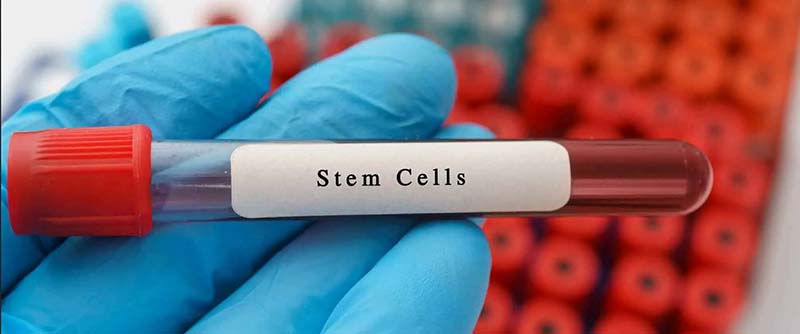
This trial is currently studying how effective cord blood stem cell infusion is in treating cerebral palsy in children. These stem cells can be obtained from an individual and then transplanted into the same or different individual.
How is Stem Cell Therapy Used?
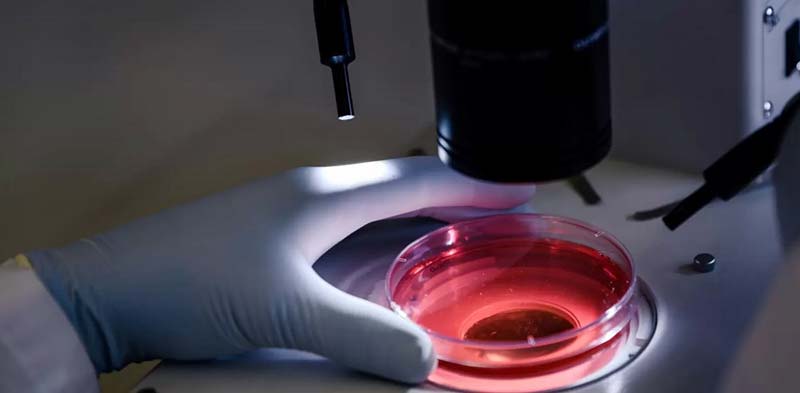
Stem cell therapy for cerebral palsy involves injecting stem cells into the brain or spinal cord, which can help repair damaged cells and promote neuroregeneration.
Stem cell therapy can offer unique benefits to children living with cerebral palsy by replacing the damaged and non-functional cells in the child's brain and supporting the remaining cells within the nervous system (neurons and oligodendrocytes cells).
While stem cell therapy may not cure this condition, it may reduce symptoms and increase mobility for a child with CP. During a stem cell transplant, the doctor injects the stem cells into the space around the spinal cord by a lumbar puncture, or the cells may be transplanted into the patient through intravenous infusion into the child's bloodstream. Treatment uses the patient's own tissue, bone marrow, or fetal stem cells from a donor cord blood bank.
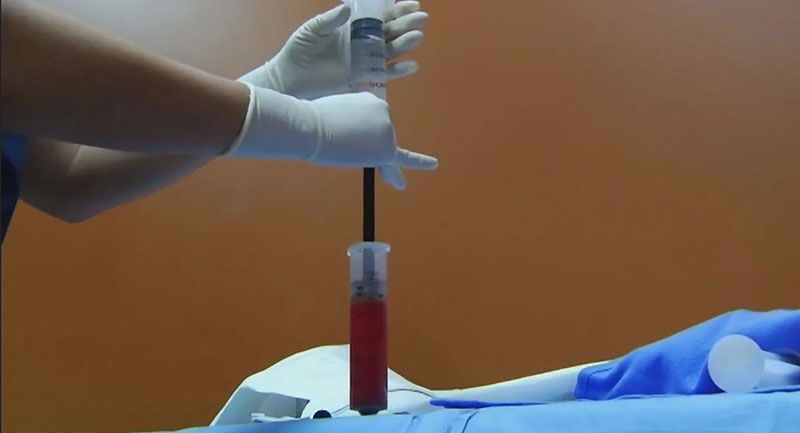
It is performed in 3 sessions scheduled 45 days apart or in 3 consecutive days. The patient's age and weight determine the number of cells that will be administered. More than one treatment may be required for very advanced cases. For a stem cell treatment in cerebral palsy to work, the injected stem cells must develop into nerve cells (neurons), which can then build connections with other cells. Once the nerve cells build connections with other cells, they will need to be able to deliver messages to the muscles that control movement.

To make this treatment more likely to be effective, intensive physical therapy is recommended following the stem cell treatment. Although stem cell research for cerebral palsy is still in its early stages, it shows great promise in becoming a potentially effective treatment for all affected individuals. Contact your child's physician if you are considering stem cell therapy as a treatment option.
Benefits and Risks of Stem Cell Therapy
Stem cell therapy may be an effective treatment option for alleviating symptoms of cerebral palsy by stimulating the repair and regeneration of damaged brain cells and tissues.
In addition to stimulating the repair and regeneration of damaged brain cells and tissues, stem cell therapy for cerebral palsy has the potential to improve muscle strength and coordination, enhance mobility and motor function, and reduce muscle stiffness and spasms by targeting the underlying cause of the condition.
The use of stem cells for treating symptoms of cerebral palsy is still considered an experimental treatment and carries some risks. Some of the risks of stem cell therapy for cerebral palsy include developing an infection, the rejection of the stem cells by the body, and tumor formation caused by unpredictable cell growth.
In addition to the immediate risks, there is also limited research on the long-term effects of cerebral palsy stem cell therapy. Additionally, the high cost of stem cell therapy and the lack of insurance coverage make it inaccessible to many individuals with cerebral palsy, further limiting its widespread use.
Although there is still much to learn about the safety and effectiveness of stem cell treatments for cerebral palsy, researchers and medical professionals are optimistic about the potential of this treatment option to improve the symptoms and quality of life of individuals with cerebral palsy.
Botox Injections to Treat Cerebral Palsy

Botox, scientifically known as botulinum toxin, is the name given to an injectable drug made from a highly toxic substance created by the bacterium Clostridium botulinum. This bacteria is found in numerous natural settings, including the intestinal tracts of fish, and can be deadly when ingested. When purified, this toxin can be used safely and effectively to lessen muscle spasticity, reduce overly high muscle tone and stiffness, and help those with spastic cerebral palsy move more freely.
Botox reduces spasticity by weakening or completely paralyzing specific muscles or preventing certain nerves from firing. In treating cerebral palsy spasticity, oral and injected medications have proven to be effective.
Children who are living with CP and experiencing significant spasticity may benefit more from injected medication because medication taken orally cannot be directed to a specific area of spasticity. It is important to note that the paralysis or weakening effect is not permanent and will eventually wear off.
With Botox injections, a child with cerebral palsy might experience improved range of motion, better position of the joints and limbs, fewer spastic movements, and less gait. One of the benefits of Botox injections is that surgery to correct muscle and joint problems may be delayed due to the relief from muscle pain and stiffness that this treatment provides.
How are Botox Injections Used?
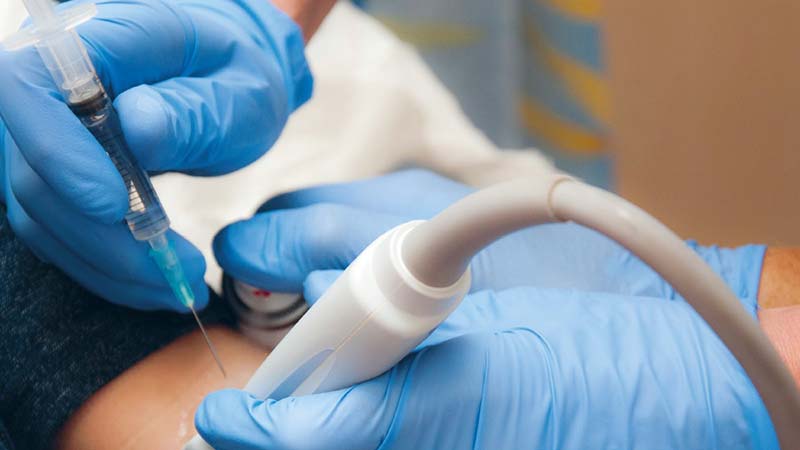
Botox injections for cerebral palsy work by temporarily paralyzing specific muscles, reducing muscle stiffness, and improving range of motion.
Before Botox therapy begins, a multidisciplinary team of specialists should complete a full evaluation of a child's range of motion, strength, motor control, and muscle tone. Once this is complete, a medical professional will inject the medication directly into the affected muscles. Some children may benefit from Botox for spasticity, specifically in their lower bodies. Others may require Botox injections into any muscles experiencing spasms.
Since this procedure often involves multiple injections, the areas to be injected can be first sprayed with a numbing substance to minimize the discomfort a child may experience. After the Botulinum Toxin injections have been administered, the physician may order a serial casting to help stretch the muscle and improve the position of the extremities.
Physical therapy is also recommended to help the patient meet their specific goals. Instructions regarding follow-up treatments will be provided once the injections are completed.
Benefits and Risks of Botox Injections for Cerebral Palsy
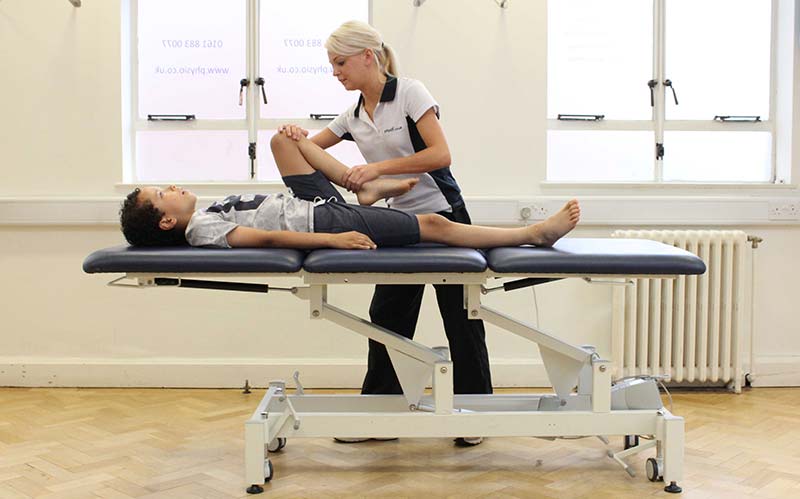
Most children who receive Botox injections will start to see results within 3 to 5 days and maximum results between three to four weeks after injections. Some of these benefits a child with CP may experience include decreased pain in stiff muscles, reduction of spasticity, and improved gait pattern and range of motion.
The benefits of Botox include:
- Significantly improved gait pattern
- Improvement in positioning and range of motion
- Decreased pain in stiff muscles
- Reduction of spasticity and greater ease in stretching
- Improved tolerance of braces
- Possible delay in surgery until the patient is older
- Improved independent use of the upper extremities
It is important to remember that the child will begin to notice a gradual fading of the effects of the Botox injections over time. Typically, a single injection will last approximately three months, and it is recommended that the child undergo a follow-up appointment after four to six weeks.
Following a Botox injection, the child must return for their scheduled follow-up appointment so a doctor can observe the medication's effects and determine if further treatment is necessary.
Although Botox has the potential to provide significant relief to children living with cerebral palsy, like any treatment, these injections are not without risk. Some things to watch for after a child receives a Botox injection are pain, an infection at the injection site, or a temporary weakness where the medication was administered.

The packaging information for the medication also explicitly states that it isn't known whether these injections are safe or useful for treating lower limb muscle stiffness. The FDA requires this statement since there have been no clinical trials for this specific use of Botox, and it has yet to be approved as a permanent solution for muscle spasticity in children with cerebral palsy.
The FDA also requires Botox packaging to include a special black box warning that is reserved for a drug's side effects that are the most serious and potentially life-threatening. The warning states that it may be possible for the toxin to spread beyond the injection side and result in symptoms of botulism.
In cases where this has occurred, the affected individual usually reports experiencing symptoms between a couple of hours and weeks after the injection. Parents and doctors need to weigh the risks and side effects against the benefits a child may receive from using Botox for cerebral palsy.
Leading Causes of Birth Injury Malpractice
When doctors, nurses, or other healthcare professionals commit medical negligence before, during, or after delivery, it can result in injuries to a mother, her child, or both. Even though not every birth injury is caused by medical malpractice, an experienced birth injury attorney can help make sure your child is compensated fairly if their provider was negligent in their care.

There are several examples of acts of medical negligence that can cause birth injuries during childbirth:
- Failure to recognize and treat signs of maternal or fetal distress, such as lack of oxygen
- Improper use of forceps or a vacuum extractor
- Using too much force during delivery
- Failure to schedule an emergency cesarean section (C-section)
- Delaying in performing an emergency C-section
- Failure to properly monitor the mother during her pregnancy
- Failure to administer the proper antibiotics or administering the wrong antibiotics to a mother with an STD or other maternal infections before delivery
- Ignoring or misreading a fetal monitoring strip
- Failure to detect and treat an umbilical cord complication
- Failure to diagnose and treat preterm labor in a timely manner
- Failure to treat maternal elevated blood pressure (preeclampsia)
- Failure to properly resuscitate a newborn after delivery
- Failure to treat jaundice and kernicterus
- Failure to respond to signs of a placental abruption
- Failure to detect a severe birth defect on a prenatal ultrasound
- Failure to carefully manage an abnormal fetal position
- Administering too high a dose of labor-inducing medications like Pitocin
Failing to address complications such as a preterm delivery or umbilical cord issues can result in a serious birth injury. As leaders in our communities, we rely on medical professionals to provide high-quality health care. Generally, when people think of medical malpractice liability, they picture doctors and nurses. However, other parties involved in the care of a pregnant woman and her baby may also be held responsible in a birth injury lawsuit.

Medical negligence may be committed by one or more of the following types of medical providers or facilities:
- Obstetricians (OB-GYN)
- Other obstetric professionals
- Pediatricians, including pediatric neurologists
- Anesthesiologists
- Labor and delivery nurses
- Midwives
- Nurses
- Hospitals and medical facilities
- Hospital administrators
- Other hospital staff
- Neonatal nurses and aids
- Neonatologists or pediatricians providing neonatal care
- Respiratory therapists
- Maternal-fetal medicine physicians and specialists (MFM)
- Laboratory staff
Although medical malpractice suits are often filed against healthcare providers like doctors and nurses, hospitals can also be held liable in certain circumstances. A hospital can be vicariously liable for an employee's negligent actions that caused harm during work hours or while the employee was performing a job-related task. For example, if an OBGYN makes a negligent mistake during pregnancy or delivery, the hospital can be held vicariously liable.
A hospital may also be held directly liable for its own actions. For instance, a hospital failing to adhere to medical protocols and standards may be directly liable for a patient's injuries. We can help you determine whether your child's birth injury was caused by a doctor, the hospital itself, or another medical professional.
When you file a birth injury malpractice claim, your lawyer must be prepared to present evidence that proves that a doctor's or hospital's negligence caused your child's birth injury. An injured plaintiff must be able to prove each of the following four legal elements in their birth injury lawsuit.
- Duty of care: Before the provider will have a duty of care, the plaintiff must be able to establish a provider-patient relationship. Upon establishing this relationship, the medical provider is expected to meet a relevant standard of care that a medical professional with the same specialization would have exercised under the same conditions.
- Breach: The next element the plaintiff must prove is that the healthcare provider or facility breached that duty by failing to meet the applicable standard of care.
- Causation: The plaintiff must then demonstrate that the healthcare provider's negligent care directly caused their or their child's injuries.
- Damages: Finally, the plaintiff must show that the harm they or their child suffered resulted in specific expenses and other losses. These losses may include anything from the cost of lifelong medical care to emotional suffering.
The plaintiff's attorney must present compelling evidence to establish liability and recover damages in birth injury cases. At Miller Weisbrod Olesky, our birth injury lawyers can collect evidence on your behalf, consult with medical experts to determine the cause of the injury, and identify all medical professionals who contributed to you or your child's birth injury.
Filing a Birth Injury Malpractice Lawsuit

Parents may file a cerebral palsy lawsuit on behalf of their child against negligent medical professionals responsible for causing their child to sustain a preventable birth injury. Families may seek compensation to cover their child's medical and treatment costs through a Birth Injury Malpractice lawsuit.
It is important to note that while every case is different, most lawsuits typically follow a similar process. If your child was injured by a doctor, nurse, or other healthcare provider, an experienced birth injury lawyer can file your case, gather evidence, and pursue full and fair compensation on your behalf.
Free Case Review
Our dedicated birth injury lawyers will determine if you are eligible to file a birth injury lawsuit during your complimentary case review, which you can schedule by contacting us via our toll-free line at 888-987-0005 or by filling out our convenient online form. If we can determine that medical malpractice may have played a role in your child's birth injury, your case will likely be accepted by our team.
Gather Evidence
A birth injury malpractice attorney will gather information and evidence related to your case as soon as they determine you qualify to pursue a lawsuit. Evidence like medical records, witness statements, and the employment history of the medical professional in your case are crucial to proving that your child's birth injury was caused by medical negligence.
File the Lawsuit
After gathering the necessary information, your attorney will file your lawsuit in the appropriate court. As soon as the case is filed, you and your family will become the plaintiffs (the party taking legal action). The healthcare professionals who may be responsible for causing your child's injury will become the defendants (the party being sued). The statute of limitations in each state governs the deadline for filing a birth injury lawsuit.
Your lawyer will ensure your case is filed on time according to your state's statute of limitations. The lawsuit outlines the charges against the defendants and gives them around 30 days to respond. If the defendants fail to respond, judgment will automatically be entered in the plaintiff's favor. In the event the defendants respond but fail to assume responsibility, they will explain why they believe they are not to blame for your child's injury.
Discovery
Your attorney will gather more evidence, such as medical records, medical expense reports, and other documents related to your case, once the defendants file their response. During this time, you, your loved ones, and medical experts may be required to give statements under oath. The parties will also exchange information and evidence relevant to their respective cases to build strong arguments. To prove that medical professionals failed to uphold a high standard of care, an experienced attorney will collect all legally required evidence.
Settlement Negotiations
Settlement negotiations can begin once both parties have prepared their cases. During this phase, both parties will try to reach an agreement (settlement) that allows them to resolve their dispute without going through a full trial. Should a settlement be reached, the defendants will pay you a lump sum, and all legal action will stop. If the case cannot be resolved during this stage, our lawyers have the experience and knowledge to represent your best interests in court.
Go Through a Trial
Cases that do not settle through settlement negotiations will go to trial. A jury and judge will examine all the evidence presented by both legal teams during the trial. A verdict is reached after each party has presented their case and a judgment has been entered. The losing party may decide to appeal the decision in some cases. The disadvantage of trials is that, while you might receive more compensation than you would receive from a settlement, you risk receiving no compensation at all if you lose. Our lawyers can help you obtain the compensation you need to cover the cost of your child's care and other injury-related expenses.
Birth Injury Malpractice Statute of Limitations

A statute of limitations is a law that imposes a deadline for filing birth injury lawsuits. If you fail to file a claim before the statute of limitations "runs out", you may lose your right to pursue legal action and seek compensation. In some cases where an injury may not be immediately apparent, the statute of limitations may be extended.
The discovery rule prevents the statute of limitations from running until the injury is discovered or reasonably should have been discovered. It is also important to remember that the statute of limitations varies by state and the type of claim you're filing. A birth injury attorney can help you avoid missing all crucial deadlines related to your case.
Get Legal Help from Our Experienced Cerebral Palsy Attorneys

A child with cerebral palsy requires ongoing treatments and therapies that are estimated to cost approximately $1 million over their lifetime. If you believe your loved one's cerebral palsy is the result of medical negligence or malpractice, you may be able to recover compensation for the cost of their medical care, therapies, assistive equipment and devices, and other cerebral palsy-related expenses.
At Miller Weisbrod Olesky, our cerebral palsy lawyers have the expertise and knowledge to determine if you have a strong case for malpractice and collect evidence to support your claim.
We have won multi-million dollar settlements and verdicts for medical malpractice victims and their families in over 20 states. Let us provide you with the support and guidance you need to navigate the complex legal process. Schedule your free case review with one of our attorneys by calling (888) 987-0005 or by completing our online form.
